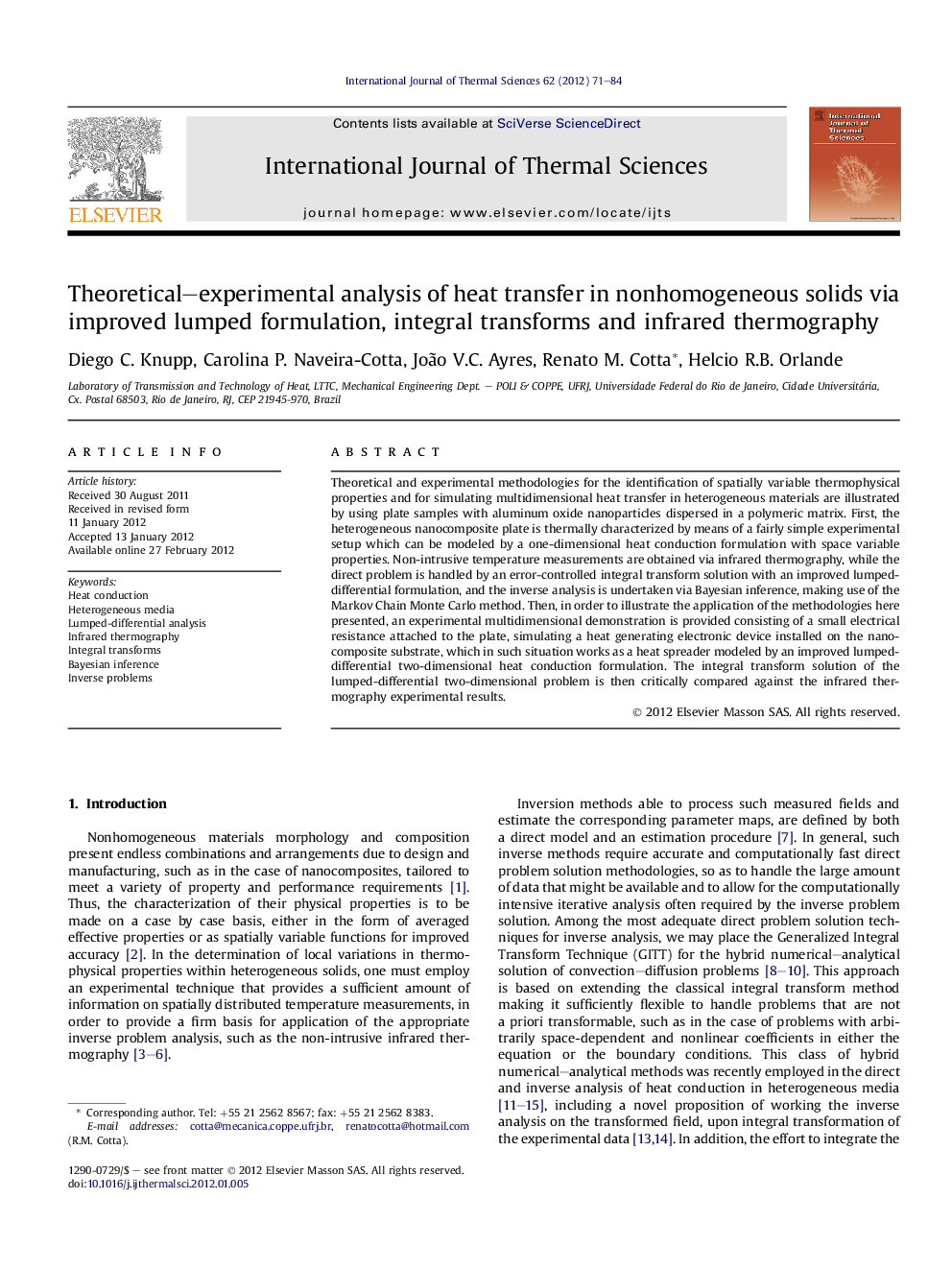| Article ID | Journal | Published Year | Pages | File Type |
|---|---|---|---|---|
| 669976 | International Journal of Thermal Sciences | 2012 | 14 Pages |
Theoretical and experimental methodologies for the identification of spatially variable thermophysical properties and for simulating multidimensional heat transfer in heterogeneous materials are illustrated by using plate samples with aluminum oxide nanoparticles dispersed in a polymeric matrix. First, the heterogeneous nanocomposite plate is thermally characterized by means of a fairly simple experimental setup which can be modeled by a one-dimensional heat conduction formulation with space variable properties. Non-intrusive temperature measurements are obtained via infrared thermography, while the direct problem is handled by an error-controlled integral transform solution with an improved lumped-differential formulation, and the inverse analysis is undertaken via Bayesian inference, making use of the Markov Chain Monte Carlo method. Then, in order to illustrate the application of the methodologies here presented, an experimental multidimensional demonstration is provided consisting of a small electrical resistance attached to the plate, simulating a heat generating electronic device installed on the nanocomposite substrate, which in such situation works as a heat spreader modeled by an improved lumped-differential two-dimensional heat conduction formulation. The integral transform solution of the lumped-differential two-dimensional problem is then critically compared against the infrared thermography experimental results.
► Analysis combines Integral transforms, Bayesian inference and Infrared thermography. ► Improved lumped-differential formulation accurately estimates surface temperatures. ► A nanocomposite plate with abrupt variation of filler concentration is characterized. ► Estimated properties employed in thermal analysis of multidimensional heat spreader.
